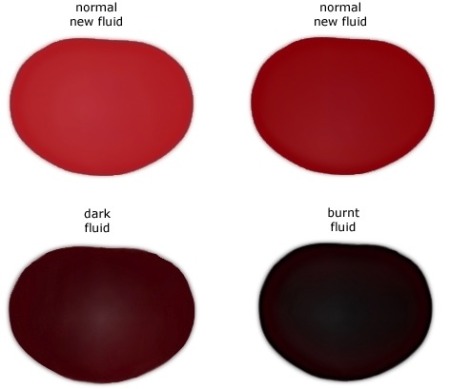Transmission fluid that is black but not burnt is usually an indication of a worn out transmission. This type of fluid will have a strong smell and may have small particles suspended in it. If the vehicle has been driven for long periods, or if it has been driven with poor maintenance, there can be smaller pieces of rubber or metal present in the fluid which would cause the discoloration.
The best way to prevent this from happening is to ensure that all service intervals are followed and ensure proper maintenance is done on your vehicle’s transmission system. It would also be wise to keep an eye on the color of any fluids used in your car as they should always remain unchanged from their original color.
If you’re checking your vehicle’s transmission fluid and it appears to be black but not burnt, then this is likely a sign that the fluid has been in use for some time. It may need to be changed or flushed out as soon as possible if you want to avoid any major issues with your transmission system. Regularly changing your fluid will help keep your vehicle running smoothly and efficiently for years to come.
What Does Bad Transmission Fluid Look Like? Good vs Bad
What are the Signs of a Blown Transmission?
A blown transmission is an expensive problem to repair, so it’s important to be aware of the signs that may indicate a failing transmission. Typical signs of a blown transmission include grinding or shaking while shifting gears, slipping out of gear while driving, delayed response when shifting gears, leaking fluid from underneath the car and burning smell coming from under the hood. If you notice any of these symptoms, it’s best to have your vehicle inspected by a qualified mechanic as soon as possible in order to avoid further damage or costly repairs.
What Does Dirty Transmission Fluid Mean?
Dirty transmission fluid is a sign that the transmission system in your vehicle needs to be serviced. It means that there are particles of debris, dirt and other materials suspended in the fluid which can cause damage to various components of the transmission if left unchecked. These particles can eventually block or reduce the flow of fluid through vital passages, causing a decrease in performance, overheating, and eventual failure.
Additionally, dirty fluid also causes wear on gears and bearings due to increased friction between them. Regular maintenance such as changing out old fluids with fresh ones will help keep your car running reliably for years to come.
What Color is Healthy Transmission Fluid?
Healthy transmission fluid should be a bright red color, with no discoloration or particles visible. If the color of your transmission fluid is brown, that means it is old and needs to be changed. If there are any flecks or particles suspended in the oil, this indicates contamination from wear and tear on parts such as gaskets or seals, which can cause damage to the internal components of your vehicle’s transmission if not addressed quickly.
Checking your transmission fluid at least every 30-60 days is important for maintaining optimal performance and reducing long-term repair costs.
What Causes Transmission Fluid to Get Dirty?
Transmission fluid can get dirty due to a number of causes. These include the build-up of particles from normal wear and tear on the transmission, as well as contamination from external sources such as dirt, dust, water or other fluids that may have entered into the system. In addition, broken seals in the transmission can also cause fluids to be leaked out and replaced with dirtier fluid.
Finally, old and degraded transmission fluid can become contaminated over time if not regularly changed according to manufacturer’s recommendations.

Credit: kellerbros.com
Black Transmission Fluid And Slipping
When your car is experiencing slipping, it can be a sign that you have low levels of transmission fluid or black transmission fluid. When the fluid becomes dark in color, it means that it has become contaminated with dirt and debris from being inside the system for an extended period of time. To prevent further damage to your vehicle’s internal parts, make sure to get your transmission checked as soon as possible if you notice signs of slipping while driving.
Transmission Fluid Dark After Change
A transmission fluid change is an important part of maintaining your vehicle’s health. After a successful transmission fluid change, it is normal to observe that the new fluid appears darker than before because it contains particles and debris from the old fluid and filter. If you notice any abnormalities in color or texture, such as chunks of metal or other materials present in the new fluid, then it may be time to have your transmission looked at by a professional mechanic.
Symptoms of Black Transmission Fluid
Black transmission fluid is a sign of serious problems within the transmission system. Common symptoms that can be associated with black transmission fluid include difficulty shifting gears, jerking or vibrations when shifting gears, strange noises coming from the engine area and leaking fluids underneath your vehicle. If any of these symptoms are present, it’s important to have your vehicle inspected by a mechanic as soon as possible to determine if there is an underlying issue causing the black transmission fluid.
Conclusion
This blog post has provided a thorough overview of the possible causes behind black transmission fluid that is not burnt. It has also discussed how to identify and prevent any underlying issues, as well as how to properly maintain your vehicle’s transmission system to ensure its longevity. All in all, it is important to be aware of the signs of transmission problems and take necessary measures if they arise.
With regular maintenance and timely repairs, you can keep your car running smoothly for many years.



